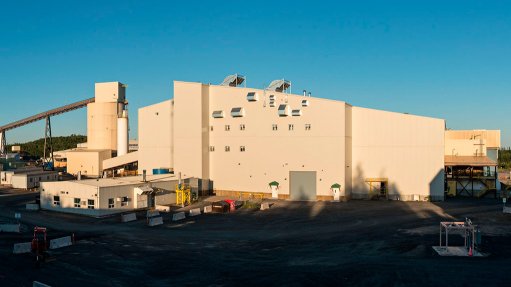
Name: Musselwhite mine.
Location: Musselwhite mine is located on the southern shore of Opapimiskan lake, in north-western Ontario, Canada.
Holding and Controlling Company: Goldcorp.
Brief Description: Musselwhite mine is a fly-in/fly-out operation that comprises a combination of leases and mining claim units covering 17 548 ha, entirely on traditional First Nations land.
Ore is extracted from the main PQ Deep and Lynx zones, with minor input from the Esker and Moose zones.
Brief History: Gold was first discovered in the area in 1962 by the brothers Harold and Allan Musselwhite of Kenpat Mines, they discovered erratic gold mineralisation in a quartz vein on the north side of Opapimiskan and several showings in iron formation on the south side of the lake.
The brothers continued to explore the area largely on their own until 1973 when a consortium comprising Dome Exploration, Canadian Nickel Co, Esso Minerals Canada and Lacana Mining Corporation intervened to finance further work.
The West Anticline One and the T-Antiform zones were discovered in 1986 and outlined a resource of 1.8-million ounces.
The mine opened in 1997 and several major ore zones on the lower limbs of the PQ Deeps synform, adjacent to the original T-Antiform ore zones, have since been found.
Products: Gold.
Geology/Mineralisation: Musselwhite mine is located within the Weagamow-North Caribou greenstone belt of the Sachigo subprovince, part of the Archean superior province. The stratigraphy in the immediate mine vicinity is dominated by mafic volcanics, chemical sediments and felsic volcanics. External to the supracrustal sequences are a series of undifferentiated gneisses and granitoids.
All lithologies within the immediate mine area have been metamorphosed at mid to upper amphibolite facies. Although the mine scale deformation is considered to form part of a progressive deformation event, it is possible to differentiate four local deformation events.
Mineralisation is predominantly hosted within meta-chemical sediments (banded iron formations), particularly within garnet/magnetite/grunerite facies meta-banded iron formations (locally termed the Northern Iron Formation). The location of mineralisation is controlled by the intersection of shear zones and folded meta-banded iron formations.
Reserves: Total proven and probable reserves as at June 30, 2016, were estimated at 8.21-million tonnes grading 6.39 g/t gold.
Resources: Total measured and indicated resources as at June 30, 2016, were estimated at 2.88-million tonnes grading 4.98 g/t gold.
Total inferred resources as at June 30, 2016, were estimated at 6.8-million tonnes grading 5.48 g/t gold.
Mining Method: Underground.
Major Infrastructure and Equipment: Musselwhite’s flowsheet includes crushing, grinding, leaching by cyanidation, carbon-in-pulp recovery and electrowinning.
Prospects: Goldcorp approved the Musselwhite materials handling project in July 2016. The project will allow for hoisting of ore through an underground winze and associated infrastructure.
This will result in reduced reliance on high-cost truck haulage by significantly reducing uphill truck haulage between the winze and underground crushers, which in turn will lead to improved energy efficiency, reduced ventilation requirements and mining costs, an enhanced production profile and, potentially extending mine life through exploration.
Following completion of the winze, which is expected in the first quarter of 2019, production is expected to increase by about 20% and operating costs will reduce by about 10% for the life of the mine.
Contact: Goldcorp investor inquiries Etienne Morin
Contact Details:
Goldcorp
Tel +1 604 696 3000
Email info@goldcorp.com
Website http://www.goldcorp.com